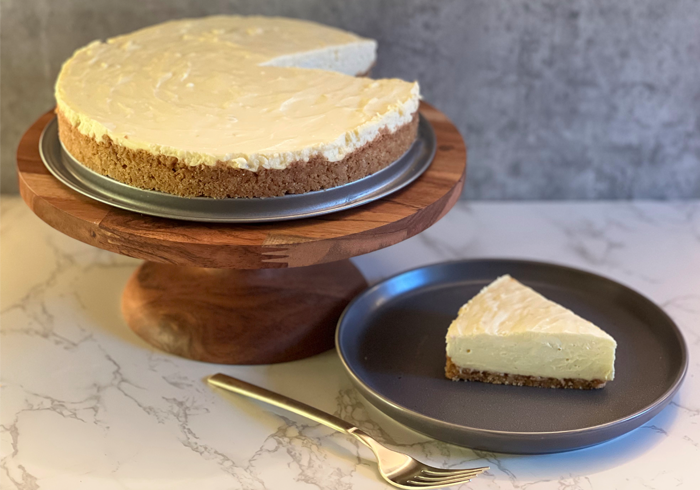
Goat Cheese Cheesecake
I quite like cheesecake, but was never motivated enough to try making it myself — until I tried the goat cheese cheesecake at one of my favorite restaurants in San Diego, The Smoking Goat. It was love at first bite, and I knew I had to try recreating it, especially after moving away from SoCal post-college. Now, goat cheese cheesecake may sound a little off-putting at first blush, but the only real difference between it and classic cheesecake is that it substitutes goat cheese for the more traditional sour cream. The end result, I think, is a cheesecake that is both slightly richer and less sweet than most others.
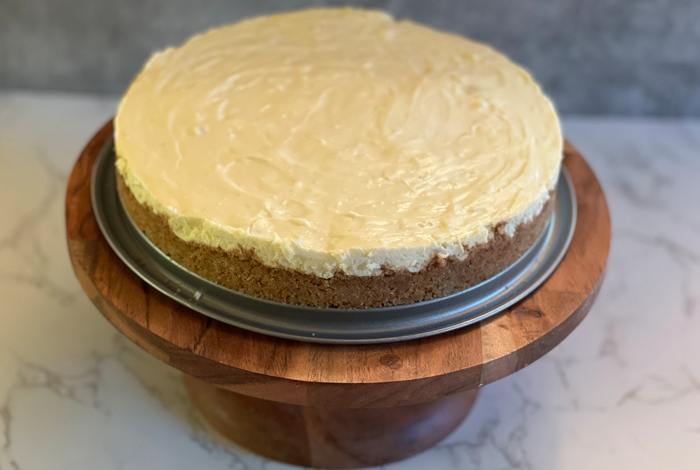
- The type of goat cheese you use can matter in that it can influence the taste of your cheesecake. On my first try, I used a stronger goat cheese, and my family (a.k.a. my sometimes reluctant panel of taste-testers) remarked that the finished product was a little salty. The second time around I used a goat cheese that was flavored with orange honey, which fixed that issue.
- The principal concerns in making a cheesecake are ensuring that it doesn’t crack or deflate. There are a number of preventative measures that you can (and that this recipe will) take, including:
- Ensuring the ingredients are room temperature will allow them to blend together more easily, reducing the chances that you will overmix. Overmixing may result in too much air being whipped into the batter; the air bubbles will burst after baking, causing the cheesecake to collapse and crack.
- Baking the cheesecake in a water bath protects your cheesecake both from cracking and taking on a rubbery texture by allowing for a gentler bake. The water bath essentially creates a moist environment that prevents the cheesecake from drying out and shields it from uneven oven heat.

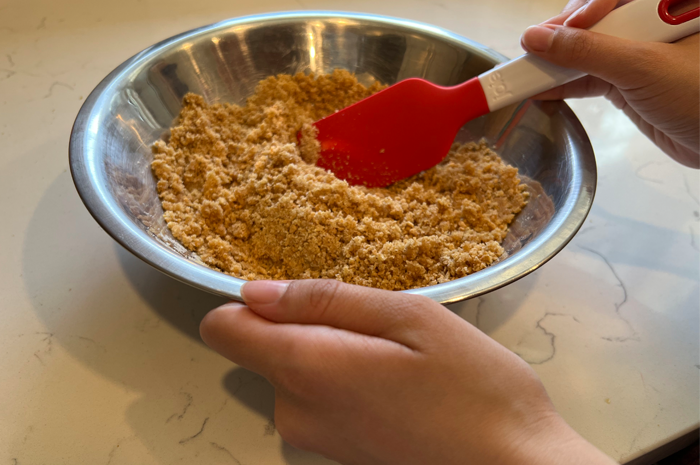
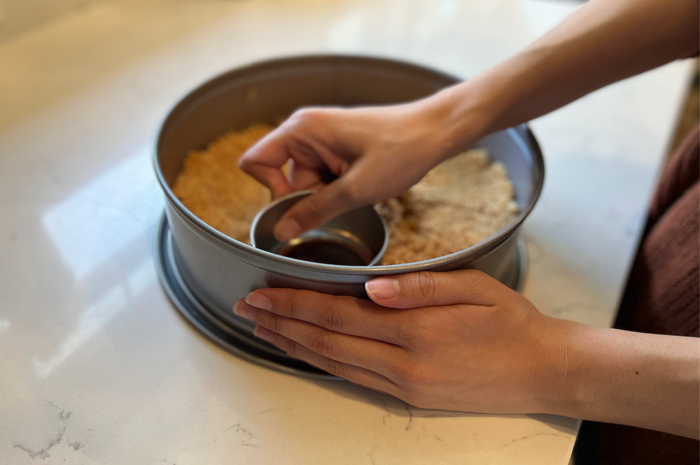
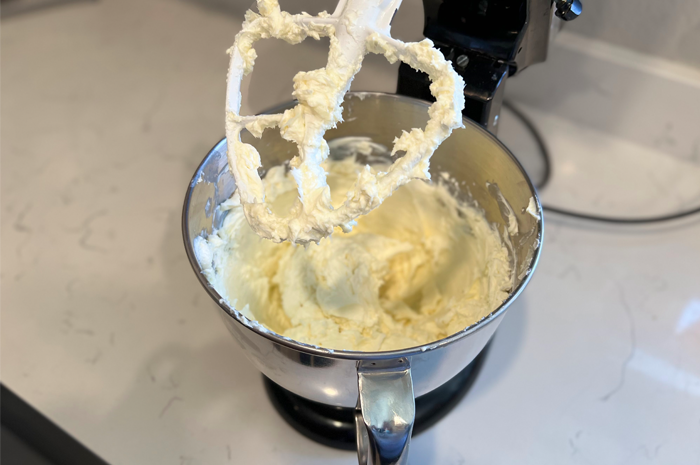
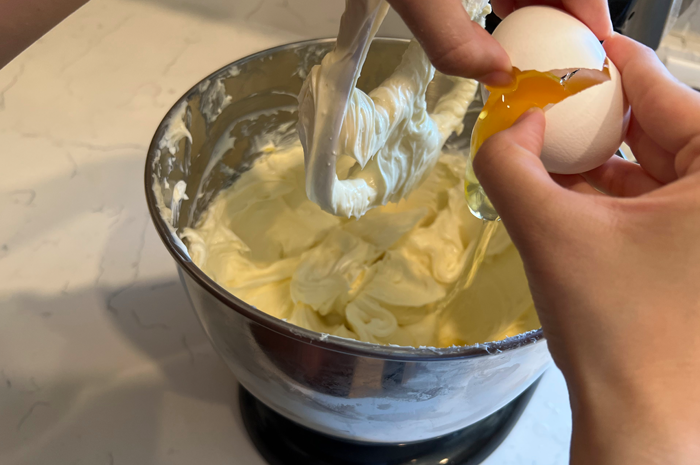
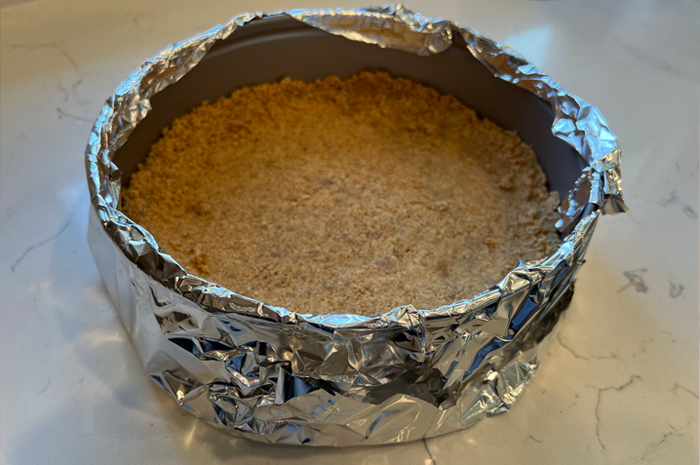
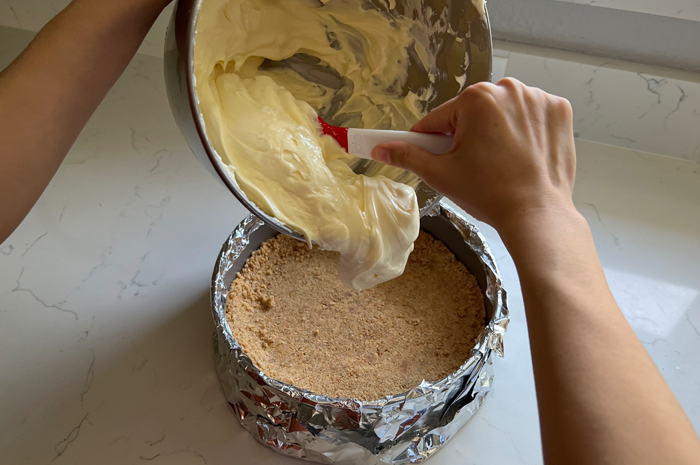
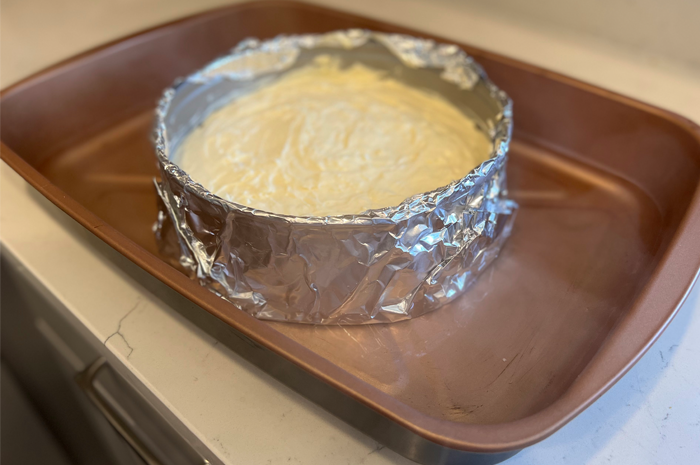

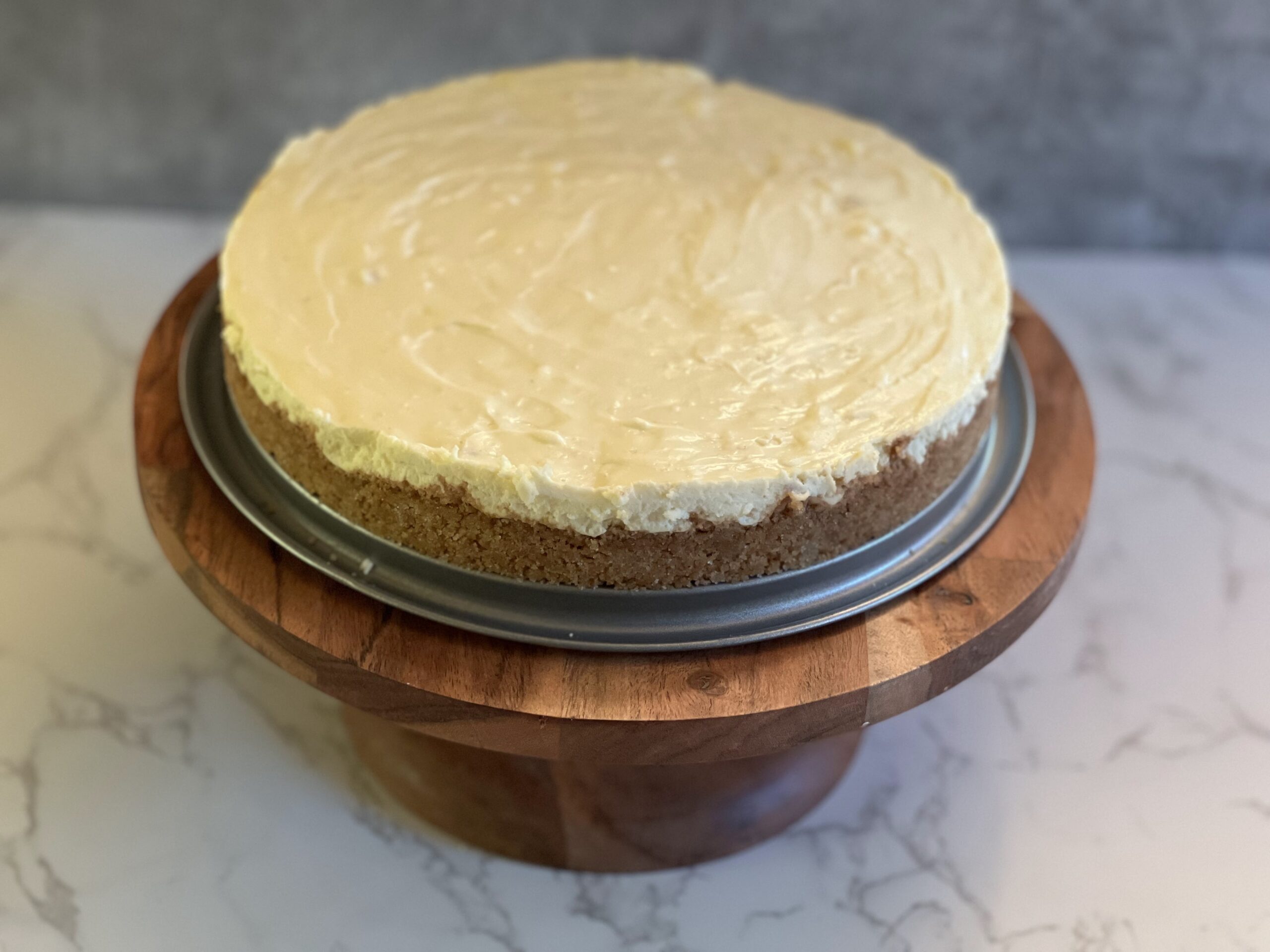
Goat Cheese Cheesecake
This goat cheese cheesecake is a slight variation of the standard cheesecake recipe that substitutes goat cheese for the more typical sour cream for a richer, less overtly sweet flavor.
Ingredients
Method
For the Crust
- Use a food processor to pulse the graham crackers into crumbs. Alternatively, if you don’t have a food processor, you can place the graham cracker sheets into a ziploc bag, seal it, and roll over the bag with a baking pin to crumble them.
- Mix the graham cracker crumbs in a large bowl with the melted butter, sugar and salt, until well combined.
- Press the mixture into your springform pan, using the bottom of a measuring cup to flatten and smooth the crust across all surfaces.
- Bake for about 10 minutes, or until the crust is set. Remove the pan from the oven and set aside.
For the Cheesecake
- In the bowl of a stand mixer, use the paddle attachment on medium speed to beat the cream cheese and sugar until smooth, for about 1 minute.
- Reduce the speed of the mixer to low and add in the goat cheese, stirring until just combined. Carefully incorporate the vanilla extract and lemon juice.
- Keeping the mixer on low speed, add in each of the eggs one at a time, beating after each new addition until just incorporated. Be very careful not to overmix at this point.
- Pour the mixture into the graham cracker crust. Wrap the bottom of the springform pan in aluminum foil to prevent leakage in the water bath.
- Prepare the water bath by pouring boiling water into a roasting pan, filling it so that it is covered by roughly 1 inch of water across. Place the cheesecake pan into the roasting pan, and bake at 325° for about 1 hour, or until the cheesecake is just set.
- Turn off the oven and open the door, leaving it ajar, leaving the cheesecake to cool in the oven for about an hour. After the hour is up, remove the cheesecake and cool it for another hour at room temperature. Chill the cheesecake for at least 5 hours in the fridge, or overnight.
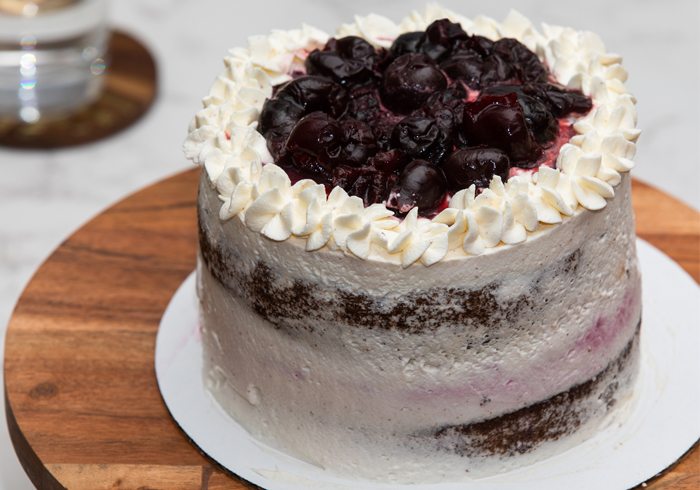
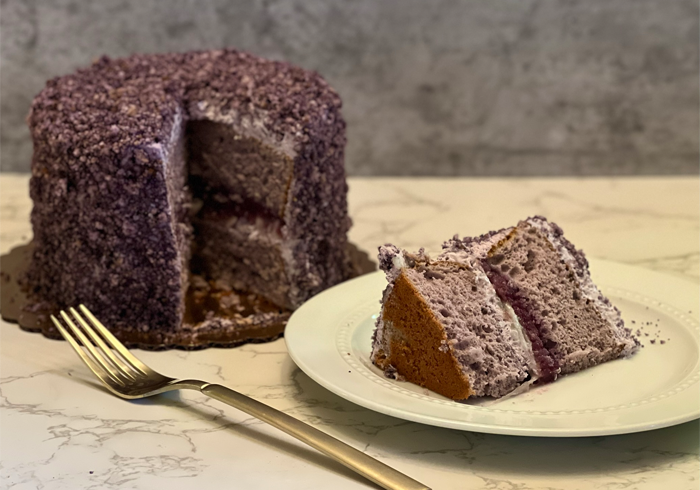
KB
April 21, 2022 at 3:59 pmThe crust looks great! Looks yum. I definitely have to try this. Looks like you’re having a lot of fun with all these baked goods, I am glad I stumbled upon your blog.
Jubilee
April 23, 2022 at 3:07 amAwww, thank you — do let me know if you end up trying to make the cheesecake! And I’m glad you stumbled across it, too 🙂
binance
August 26, 2025 at 6:25 amCan you be more specific about the content of your article? After reading it, I still have some doubts. Hope you can help me.
binance
September 2, 2025 at 4:19 pmYour article helped me a lot, is there any more related content? Thanks!
zoritoler imol
September 4, 2025 at 6:47 pmThroughout this great design of things you’ll get a B+ just for effort and hard work. Where you misplaced us was first on the particulars. As they say, the devil is in the details… And it couldn’t be much more accurate in this article. Having said that, allow me reveal to you just what did work. The authoring is definitely very convincing which is possibly the reason why I am taking the effort to comment. I do not really make it a regular habit of doing that. Second, despite the fact that I can see the jumps in reasoning you make, I am definitely not confident of just how you seem to unite your ideas which make the conclusion. For right now I will, no doubt subscribe to your position but trust in the foreseeable future you actually link the dots much better.
droversointeru
September 5, 2025 at 4:18 amVery interesting details you have noted, thanks for putting up.
binance-
September 14, 2025 at 11:32 pmYour point of view caught my eye and was very interesting. Thanks. I have a question for you.
binance Registrācija
October 24, 2025 at 10:25 pmYour article helped me a lot, is there any more related content? Thanks!
otvorenie úctu na binance
October 30, 2025 at 4:53 amThanks for sharing. I read many of your blog posts, cool, your blog is very good.
Бонус при регистрации на binance
October 30, 2025 at 9:26 pmYour article helped me a lot, is there any more related content? Thanks!
binance referral
December 7, 2025 at 7:28 pmYour point of view caught my eye and was very interesting. Thanks. I have a question for you.